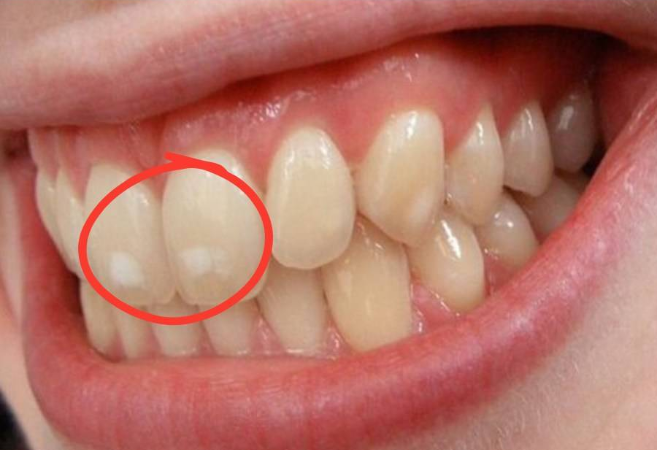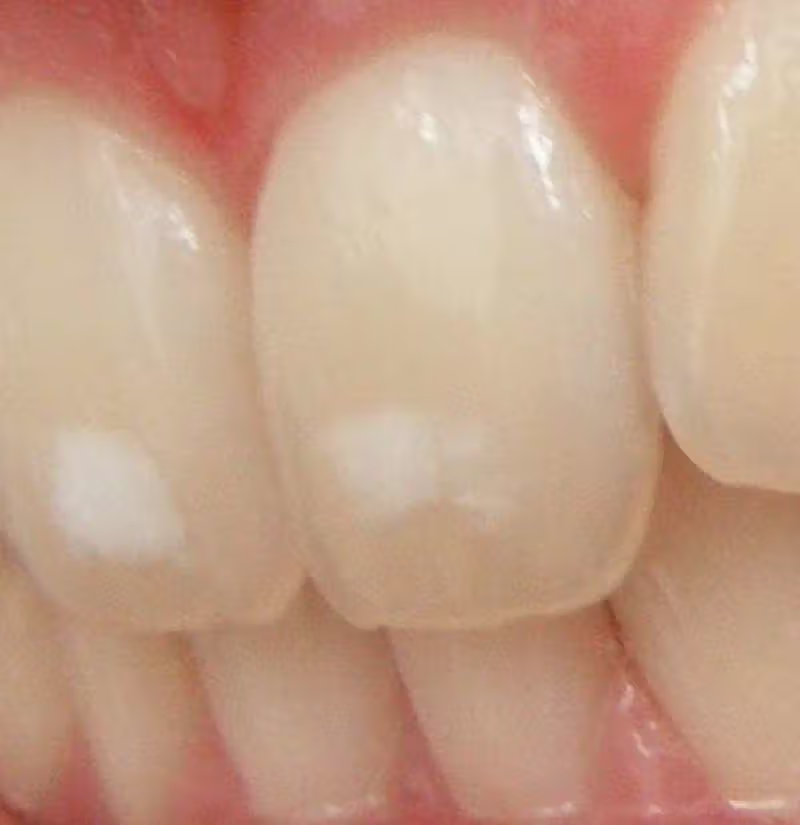Spotting white spots on your teeth may not seem like a big deal, but they could be an early sign of tooth decay or other dental health issues. While these patches might appear harmless, they often signal deeper problems with your enamel that, if ignored, can lead to severe complications. Let’s dive into what these spots mean, how they develop, and why taking quick action is essential.
What Are White Spots on Teeth?

White spots on teeth are often the first visible sign of enamel demineralization, a process where minerals like calcium and phosphate are lost from the tooth’s surface. These spots occur when the enamel weakens, and they are an early indicator of dental decay, particularly when paired with other symptoms like sensitivity or discoloration.
Sometimes, white spots may also result from other conditions such as fluorosis (overexposure to fluoride during enamel development) or hypocalcification (weakened enamel from insufficient calcium during tooth formation). Regardless of the cause, they are not a cosmetic issue alone—they can signal deeper health concerns that need attention.
Common Causes of White Spots on Teeth
Understanding what causes these spots can help you prevent or address the issue effectively. Here are some primary reasons why they may occur:
- Early Tooth Decay: Bacterial buildup from plaque can lead to acid production, eroding the enamel and leaving white spots as a warning sign.
- Fluorosis: Consuming excessive fluoride during childhood can result in white patches on the teeth.
- Poor Oral Hygiene: Insufficient brushing or flossing, especially around braces or dental appliances, allows plaque to accumulate and harm the enamel.
- Dietary Habits: High sugar or acidic diets contribute to enamel erosion and the formation of white spots.
- Dry Mouth: A lack of saliva reduces the natural defense against plaque buildup, increasing the risk of enamel demineralization.
Symptoms That Accompany White Spots
While the white patches themselves might catch your eye, they often come with other warning signs of potential dental issues. Pay close attention to these symptoms:
- Tooth Sensitivity to Hot or Cold
If your teeth feel extra sensitive when sipping on hot coffee or eating ice cream, it’s likely because the enamel is thinning, exposing the underlying dentin. - Discoloration Progression
White spots might start to darken, turning brown or black as decay progresses. This shift is a red flag that immediate action is required. - Tooth Pain or Discomfort
Pain while chewing or biting could indicate that the decay is advancing, potentially affecting deeper layers of the tooth. - Bad Breath or Unpleasant Taste
Bacterial buildup in decayed areas can emit a bad odor or leave a persistent metallic taste in your mouth. - Visible Pits or Holes
White spots that go untreated may evolve into cavities, appearing as small holes or pits on the tooth surface.
Steps to Address White Spots on Teeth

If you’ve noticed white spots on your teeth, taking immediate steps can prevent further damage. Here’s what to do:
1. Schedule a Dentist Visit
The first and most important step is consulting a dentist. A professional evaluation can determine the underlying cause and severity of the problem. Dentists may recommend fluoride treatments, remineralizing toothpaste, or even dental sealants to prevent decay.
2. Improve Your Oral Hygiene Routine
Consistency is key to preventing and treating enamel demineralization. Here’s what you should focus on:
- Brush twice a day with fluoride toothpaste.
- Floss daily to remove plaque between teeth.
- Use an antibacterial mouthwash to reduce harmful bacteria.
3. Modify Your Diet
Cut down on sugary and acidic foods that erode enamel. Incorporate calcium-rich foods like cheese, milk, and leafy greens to strengthen teeth naturally.
4. Address Dry Mouth
If dry mouth is a contributing factor, drink more water, use sugar-free gum to stimulate saliva, and avoid dehydrating substances like caffeine or alcohol.
5. Explore Advanced Treatments
For severe cases, your dentist may recommend professional treatments, such as:
- Fluoride Varnishes: Applied directly to the teeth to remineralize enamel.
- Resin Infiltration: A minimally invasive procedure to mask white spots and stop further decay.
- Bonding or Veneers: For cosmetic improvement if the spots are persistent or extensive.
Why Early Detection Matters

Ignoring white spots on your teeth is a risk you don’t want to take. Early detection can prevent mild demineralization from escalating into severe decay, saving you from painful procedures and costly dental work down the road.
Benefits of Acting Early
- Preserve Tooth Structure: Timely treatment prevents the need for fillings, crowns, or root canals.
- Avoid Complications: Untreated decay can lead to infections, abscesses, and even tooth loss.
- Maintain Confidence: Addressing aesthetic concerns early ensures your smile stays bright and healthy.
Preventing White Spots on Teeth
Prevention is always better than cure. By adopting healthy habits and staying proactive, you can reduce your risk of developing white spots. Here’s how:
- Brush with Fluoride Toothpaste: This helps replenish lost minerals and protects against plaque buildup.
- Use a Straw for Sugary or Acidic Drinks: This minimizes direct contact with your teeth, reducing enamel erosion.
- Get Regular Dental Checkups: Professional cleanings and exams catch issues early, preventing minor problems from escalating.
What Makes White Spots Dangerous?

At a glance, white spots may seem harmless, but they’re often the first step toward more significant dental issues. Once the enamel weakens, it opens the door for bacteria to invade deeper layers of the tooth, potentially leading to cavities, infections, or even gum disease.
Additionally, they can impact your confidence. A discolored or uneven smile can make you feel self-conscious, which is why addressing white spots promptly is important for both oral health and self-esteem.
Encourage Healthy Smiles: Share Your Thoughts
Now that you understand why those white spots on teeth are more than just a cosmetic issue, it’s time to act. Have you noticed similar spots on your own teeth or someone else’s? What was your first thought? Share your experience in the comments—your story might inspire someone else to prioritize their dental health.
Conclusion: Keep an Eye on Your Enamel
White spots on teeth are more than just an aesthetic concern—they’re a warning sign of potential tooth decay or enamel issues. By recognizing the symptoms early and taking action, you can protect your smile from further damage. Whether it’s improving your oral hygiene, changing your diet, or consulting a dentist, the steps you take today can make all the difference for your dental health tomorrow.
So, don’t ignore those white spots. Take charge of your oral health, and remember that even the smallest signs can have a big impact if left unchecked. Try more puzzles and challenges to keep your mind sharp—and keep your smile even sharper!


